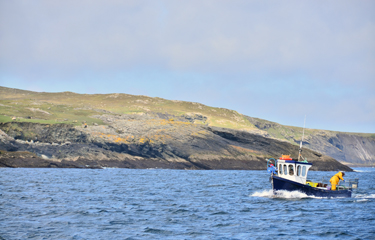Ireland has secured a quota of 195,000 metric tons under the just-completed European Union fisheries negotiations, but the country has been branded a laggard in E.U. efforts to end overfishing of its waters.
The European Commission had sought a 14 percent cut to Ireland’s Celtic Sea haddock quota, but instead the country pushed for and received a 30 percent increase. Additionally, Ireland received a 15 percent cut to its prawn quota, though the E.C. had sought a 32 percent cut.
Ireland Fisheries Minister Michael Creed said this week he had been “very concerned” prior to the talks in Brussels at the impact of the proposed cuts on Irish fishing companies, and about the ability of Irish companies implement a no-discard ban, which came in this year. Creed called on the E.C. to apply scientific advice in a “balanced and practical manner.” But Ireland, which markets its Origin Green-branded seafood as sustainable and environmentally friendly – is the worst offender in the E.U. for stymying scientific advice in seeking higher quota limits, according to several NGOs.
According to a New Economics Foundation investigation of E.C. documents, Irish ministers have secured a 59 percent difference between scientifically advised limits and eventually agreed quotas, representing a 41 percent upward increase on scientifically advised limits. In 2017, Irish negotiators sought for 17 stocks to be set above levels judged sustainable by scientific advice, half the total in which the country has a share.
Seeking to head off a sustainability crisis, the E.U.’s executive arm forced reform of the Common Fisheries Policy in 2013. The E.C. set a deadline of 2020 by which overfishing was to be ended, having summarized the situation in 2009 in its fisheries as one of “…overfishing, fleet overcapacity, heavy subsidies, low economic resilience, and decline in the volume of fish caught by European fishermen.”
According to its own laws passed with the goal of ending overfishing in waters it controls, the E.U. must set annual catch limits for all harvested fish stocks in line with scientific advice. Yet 40 percent of E.U. fishing stocks remain overexploited and 35 percent remain outside safe biological limits, in part as a result of the E.U.’s own subsidies over the decades to expand and renovate national fleets.
Having missed its self-imposed 2015 deadline to end overfishing, the E.U. looks unlikely to make the final 2020 deadline, given 40 percent of its recently imposed catch limits still exceed scientific advice. Scientists recommended a no-fishing ban for eight stocks in 2020, including for three out of the five herring stocks and two of five cod stocks which Ireland has a share in, despite a 36 percent increase in the total mass of commercially important fish populations in the Northeast Atlantic between 2003 and 2018.
A full implementation of the E.U. plan to end overfishing will mean many fisheries will have to close, the conservation group Birdwatch Ireland has warned. In a press release, the NGO argued this situation was avoidable had Irish authorities taken action earlier to ensure the sustainability of the country’s catch.
“When managed sustainably, fish stocks can be one of Ireland’s richest renewable resources. Overfishing doesn’t benefit anyone, least of all the coastal communities,” BirdWatch Ireland Policy Officer Fintan Kelly said in a statement.
Photo courtesy of Elzbieta Sekowska/Shutterstock







